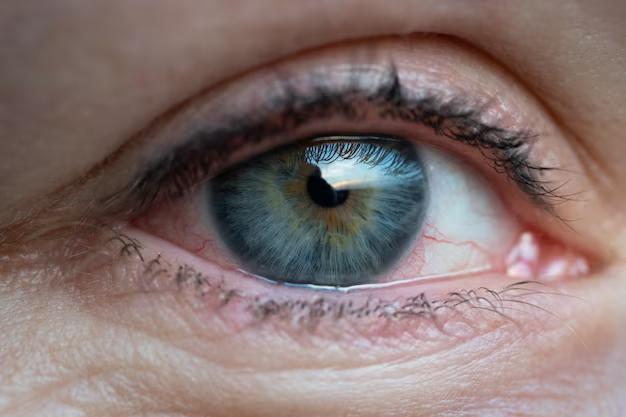Understanding Cataracts: What Really Causes Them?
Cataracts might seem like a distant concern, something you'll think about later in life. However, understanding what causes cataracts is crucial, as they are the leading cause of vision impairment globally. Cataracts can affect anyone, and knowing the contributing factors empowers you to take preventative steps to protect your eye health. In this comprehensive guide, we'll explore what causes cataracts, delve into related subtopics that add depth and context, and present the discussion in an engaging, reader-friendly manner.
🌟 The Basics: What are Cataracts?
Cataracts occur when the lens of the eye becomes clouded, affecting clarity of vision. Imagine looking through a frosty or fogged-up window — that's what vision might be like for someone with cataracts. This condition often develops slowly and starts to show symptoms only when it begins to interfere with daily activities. Though commonly linked with aging, cataracts aren't exclusive to the elderly.
🤔 How Do Cataracts Form?
The eye's lens is mostly made up of water and proteins. Over time, these proteins can clump together, creating an opaque area. This build-up scatters light as it passes through the lens, impairing vision. Several factors can influence this protein clumping process.
🌀 Exploring the Causes of Cataracts
Age: The Most Common Factor
One of the most common causes of cataracts is aging. As we grow older, the natural wear and tear on the lens lead to these protein changes. Most people aged 60 and above experience some clouding of the lens, although at varying degrees.
Genetics and Family History
Cataracts can also be hereditary. If cataracts run in your family, you may have a higher chance of developing them. Genetic factors can determine how quickly the lens ages and changes over time.
UV Radiation Exposure ☀️
Chronic exposure to ultraviolet (UV) light can be damaging to your eyes and is a recognized risk factor for developing cataracts. Wearing sunglasses that block UV rays can be a simple preventive measure.
Lifestyle Influences: Smoking and Alcohol
Smoking has been shown to increase cataract formation. The toxins in cigarette smoke can alter the lens's natural state, promoting clouding. Excessive alcohol consumption is yet another factor that may increase the risk.
Health Conditions: Diabetes
Diabetes is closely linked to cataract development. High blood sugar levels over time can lead to changes in the eye that quicken the formation of cataracts.
Medication and Eye Trauma
Certain medications, particularly corticosteroids, have been associated with cataract formation when used long-term. Additionally, previous eye injuries can also contribute to the development of this condition.
🔍 Types of Cataracts
Understanding the type of cataract is crucial in anticipating progression and planning treatment. Cataracts are not a one-size-fits-all condition; there are several types, each with distinct characteristics.
Nuclear Cataracts
These often develop as a result of aging and are characterized by a gradual yellowing and hardening of the lens's central zone.
Cortical Cataracts
These start as whitish, streak-like opacities on the outer edge of the lens cortex and progress toward the center. They often result in glare-related problems.
Posterior Subcapsular Cataracts
These form quickly at the back of the lens and are particularly troublesome for readers and those dealing with glare.
📖 Let's Dive Deeper: Related Subtopics
Understanding the diverse aspects surrounding cataracts can offer a more holistic picture of this condition.
How Diet and Nutrition Affect Cataract Risk
Diet plays a role in eye health, potentially influencing cataract development. Incorporating foods rich in antioxidants, vitamins C and E, and omega-3 fatty acids can support lens health. Leafy greens, nuts, and fish are great choices.
Early Symptoms: Spotting Cataracts
Recognizing early signs is essential for timely intervention. Symptoms include:
- Blurry or cloudy vision
- Increased glare
- Frequent prescription changes for glasses
- Colors appearing faded
Prevention Strategies 🛡️
Preventing cataracts might not always be possible, but certain lifestyle choices can delay their onset. Here are some tips:
- 👓 Wear sunglasses: Ensure they block 100% of UV rays.
- 🏃♂️ Stay active: Regular physical activity may help lower risk.
- 🌿 Quit smoking: This can significantly decrease the risk.
- 🧬 Monitor diabetes: Keep blood sugar levels under control.
- 🥗 Embrace a balanced diet: Focus on nutrient-rich foods.
The Impact of Cataracts on Daily Life
Cataracts can profoundly impact everyday life. Tasks like reading, driving, and recognizing faces can become challenging, affecting independence and quality of life.
📝 Summary Table: Quick Takeaways
| Aspect | Key Points |
|---|---|
| Risk Factors | Aging, genetics, UV exposure, smoking, alcohol, diabetes, medication |
| Types | Nuclear, cortical, posterior subcapsular |
| Prevention Tips | Sunglasses, healthy diet, quit smoking, control diabetes, stay active |
| Symptoms | Blurry vision, glare, prescription changes, faded colors |
Eye-Opening Insights
We hope this guide helps clarify what causes cataracts and how they can affect vision. By understanding the risks, types, and possible interventions, you're better equipped to prioritize your eye health and delay the onset of cataracts. Remember, regular eye check-ups with a professional are essential for maintaining good eye health.
Engaging with resources like this can help you stay informed and make proactive decisions to support long-term vision well-being. Understanding and mitigating the factors within your control is your first defense against cataracts. 🕶️🥦
